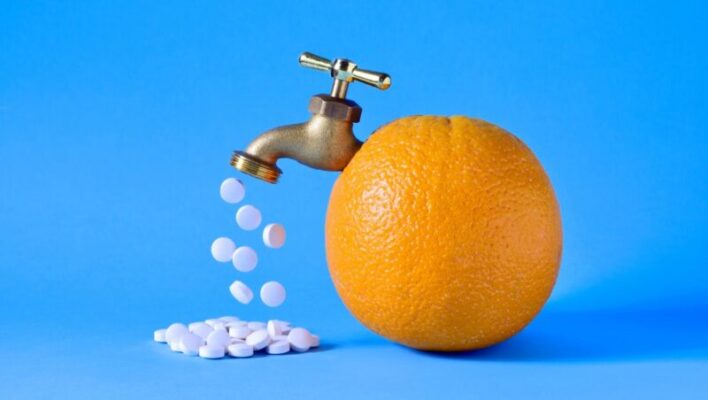
How Much Vitamin C To Dechlorinate Water: Maintaining the Proper Concentration
Last updated on June 23rd, 2022 at 04:28 am
We always prefer to have food or drinks free from contamination and harmful chemicals. Therefore, it is even more of a concern when it comes to our drinking water.
Chlorine and chloramines are added to the water supply by the companies providing water to protect it from contamination. To neutralize the chlorine and chloramines, Vitamin C is used.
Drinking water passes through a filter which helps it get rid of neutralizing chlorine and chloramines. Chlorine and chloramines present in our bathwater significantly affect our skin.
It is necessary for the bathwater also to be neutralized but in a different way. Since bathwater cannot be filtered, it should be neutralized with hot and quick running water.
How Should We Begin?
The aim is to give an instructional overview for sanitary engineers focusing on neutralizing chlorine from water using Vitamin C. Sanitary engineers uses different techniques to disinfect the water bodies.
State regulatory agencies issue a license to these operators before any modified or treated water is dispersed in a navigable water stream.
Sanitary engineers need to make sure that they neutralize the chlorinated water before dispersing them into rivers and other water bodies. A small amount of chlorine is harmful to the small and beneficial aquatic creatures living in water bodies.
Methods for dechlorination
Water for bathing and showering
Using Vitamin C is the best way to purify the bathwater, which was chlorine and chloramine-treated. Chloramines are defined as the collection of chemical compounds that keep chlorine and ammonia. During chlorination, the phenomena of ammonia emission can cause copper and lead to corrosion.
Add Vitamin C to reduce the harmful effects of chlorination
Adding Vitamin C to chlorine and chloramine-treated water can reduce its harmful properties and enhance its taste. Having a Vitamin C supplement half an hour before consuming a chlorinated drink can decrease chlorine’s taste in it.
It is an excellent idea to carry a Vitamin C supplement with you before you head outside to eat in a restaurant. It can also work as the best energy supplement besides protein bars for you.
Chemical dechlorination v/s Passive dechlorination
It is advisable to use passive dechlorination rather than chemical dechlorination to neutralize chlorine contamination. There are many ways to dechlorinate a water body passively. Sanitary engineers can separate and hold water in a tank or a pond till the chlorine disappears by air and sunlight to neutralize chlorine in a slow and steady process.
Sanitary engineers may release chlorinated water to the ditch or a street surface to clean if they want. They must ensure that it does not enter a stream or a pond used by people before the chlorine in the water is neutralized.
For pond and aquariums
Care-takers of aquariums and ponds often use Vitamin C to purify and neutralize chlorine. Vitamin C is a little acidic, so you might want to keep a check on the water’s pH level. The amount of Vitamin C, which is ideal to use, is about a teaspoon full or Vitamin C supplement capsules known as weights can also be used. If you are not sure about such a small amount of Vitamin C’s effectiveness, you can always add a little more.
Chemical Methods
Chemical procedures for dechlorination are considered to be more effective than passive procedures. Chemical procedures like water heaters use sulfur-based chemicals to dechlorinate the water.
Sulfur-based chemicals are toxic, and it decreases the percentage of oxygen present in the water. Reduce the percentage of oxygen in the water of streams and lakes can be very hazardous.
Dechlorination of bathing water with Vitamin C
Vitamin C is also known as ascorbic acid, as it is mildly acidic. Because of its acidic nature, the pH level might rise a bit in the water.
For a long time, the acid can be used as a dechlorinating agent for laboratory analysis for reserving chlorinated and Chloramination samples of water.
American Water Works Association (AWWA) has added Vitamin C in the standard AWWA, 2005b. Adding Vitamin C is now one of the official ways of dechlorinating water bodies and disinfecting them.
San Francisco Public Utilities Commission (SFPUC) and other utility organizations use Vitamin C to dechlorinate before the contaminated water is dispersed.
There is no National Science Foundation (NSF) International certification that advises using devices having or using Vitamin C. Effervescent Vitamin C bath bombs or a shower attachment having Vitamin C coated shower-head can be brought to purify chlorine-contaminated bathing water.
Some people like to remove chlorine and chloramines and purify bathing water to protect their skin while bathing.
To benefit universal public health, it is necessary to remove chlorine and chloramine from water through different methods.
Read Dive is a leading technology blog focusing on different domains like Blockchain, AI, Chatbot, Fintech, Health Tech, Software Development and Testing. For guest blogging, please feel free to contact at readdive@gmail.com.
